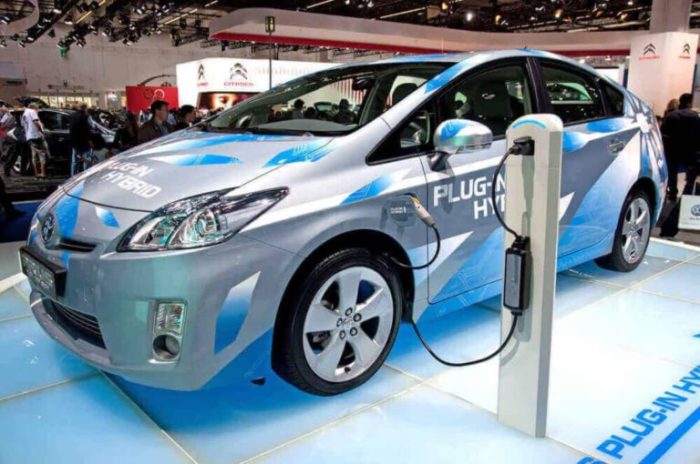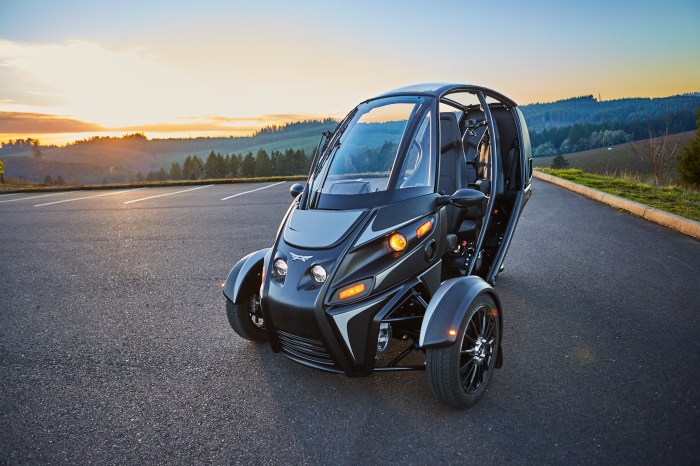With electric vehicles revolutionizing the automotive industry, we delve into the world of sustainable transportation, exploring the benefits, types, infrastructure, and future trends of EVs.
Benefits of Electric Vehicles

Electric vehicles offer numerous benefits that make them a compelling choice for environmentally-conscious consumers and those looking to save on costs in the long run.
Environmental Advantages
Electric vehicles produce zero tailpipe emissions, significantly reducing air pollution and greenhouse gas emissions. This helps to combat climate change and improve air quality, especially in urban areas where vehicle emissions are a major contributor to pollution.
Cost Savings
While the upfront cost of purchasing an electric vehicle may be higher than a traditional gasoline vehicle, EV owners can save money in the long term. Electric vehicles have lower fuel and maintenance costs, as electricity is generally cheaper than gasoline and EVs have fewer moving parts that require maintenance or replacement.
Maintenance Requirements
Compared to traditional gasoline vehicles, electric vehicles have fewer components that need regular maintenance, such as oil changes and brake replacements. This can result in lower maintenance costs over the lifetime of the vehicle, providing additional savings for EV owners.
Government Incentives
Many governments around the world offer incentives to promote the adoption of electric vehicles. These incentives can include tax credits, rebates, and access to carpool lanes, making it more affordable and convenient for consumers to switch to electric vehicles and reduce their carbon footprint.
Types of Electric Vehicles
Electric vehicles (EVs) come in various types to cater to different needs and preferences. The two main categories of EVs are battery electric vehicles (BEVs) and plug-in hybrid electric vehicles (PHEVs).
Battery Electric Vehicles (BEVs)
Battery electric vehicles, also known as pure electric vehicles, run entirely on electricity stored in their batteries. They do not have a gasoline engine and produce zero tailpipe emissions. BEVs need to be plugged in to recharge their batteries, typically using a charging station at home or in public places.
- BEVs offer a completely electric driving experience, with no reliance on gasoline.
- Charging infrastructure for BEVs includes home charging stations, public charging stations, and fast-charging networks.
- BEVs have a limited range compared to PHEVs but are continuously improving with advancements in battery technology.
Plug-in Hybrid Electric Vehicles (PHEVs)
Plug-in hybrid electric vehicles combine an internal combustion engine with an electric motor and a battery. PHEVs can operate on electricity alone for a limited range before switching to the gasoline engine. This dual power source allows for more flexibility and longer driving ranges.
- PHEVs offer the option to drive on electricity or gasoline, providing a balance between electric and hybrid driving.
- Charging infrastructure for PHEVs includes home charging for the electric battery and refueling at gasoline stations.
- PHEVs typically have a longer driving range than BEVs due to the presence of a gasoline engine for extended trips.
Hydrogen Fuel Cell Electric Vehicles
Hydrogen fuel cell electric vehicles (FCEVs) use hydrogen gas to generate electricity through a chemical reaction in the fuel cell stack. This electricity powers the electric motor that propels the vehicle, emitting only water vapor as a byproduct. FCEVs are considered zero-emission vehicles and offer fast refueling times compared to battery electric vehicles.
- FCEVs use hydrogen as fuel, which can be refueled at hydrogen stations similar to gasoline stations.
- The technology behind FCEVs involves converting hydrogen gas into electricity to power the vehicle’s motor, producing no harmful emissions.
- Although the infrastructure for hydrogen refueling is still limited, FCEVs are gaining traction as a sustainable transportation option.
Charging Infrastructure
Electric vehicles are undoubtedly the future of transportation, but their widespread adoption heavily depends on the availability of a well-developed charging infrastructure. Without a reliable network of charging stations, EV owners may face range anxiety and inconvenience, hindering the transition to cleaner transportation options.
Types of Charging Stations
- Level 1 Charging: This is the most basic form of charging, using a standard household outlet. While convenient for overnight charging at home, it is the slowest option.
- Level 2 Charging: These stations provide faster charging speeds than Level 1 and are commonly found at workplaces, public parking lots, and shopping centers.
- DC Fast Charging: Also known as Level 3 charging, these stations can charge an EV significantly faster, making them ideal for long-distance travel and quick top-ups.
Challenges and Solutions
- Range Anxiety: One of the main concerns for EV owners is the fear of running out of battery charge before reaching a charging station. To combat this, increasing the density of charging stations and implementing smart charging solutions can help alleviate range anxiety.
- Infrastructure Investment: Building a comprehensive charging network requires substantial investment. Governments, businesses, and utility companies need to collaborate to fund and deploy charging infrastructure effectively.
- Charging Station Accessibility: Ensuring that charging stations are easily accessible and strategically located is crucial for promoting EV adoption. Installing chargers in urban areas, along highways, and at popular destinations is key.
Innovative Charging Technologies
- Wireless Charging: This technology enables EVs to charge without the need for physical cables, making the charging process more convenient and seamless.
- Bidirectional Charging: Allows EVs to not only receive energy from the grid but also send excess energy back, contributing to grid stability and enabling vehicle-to-grid capabilities.
- Solar-Powered Charging: Integrating solar panels into charging stations can generate clean energy on-site, reducing the environmental impact of charging EVs.
Future Trends in Electric Vehicles
Electric vehicles have been rapidly evolving, paving the way for a greener and more sustainable future. Let’s delve into some of the exciting trends shaping the electric vehicle industry.
Advancements in Battery Technology
With the increasing demand for electric vehicles, significant advancements have been made in battery technology. Manufacturers are focusing on developing batteries with higher energy density, faster charging capabilities, and longer lifespan. The introduction of solid-state batteries holds promise for even greater improvements in the future.
Integration of Renewable Energy Sources
The integration of renewable energy sources with electric vehicle charging is gaining traction. Solar panels, wind turbines, and other renewable sources are being utilized to power electric vehicle charging stations, reducing the carbon footprint associated with EVs. This trend aligns with the goal of creating a more sustainable and eco-friendly transportation system.
Impact of Autonomous Driving Technology
Autonomous driving technology is revolutionizing the automotive industry, including electric vehicles. Self-driving capabilities are expected to enhance the efficiency and safety of electric vehicles, leading to increased adoption among consumers. The seamless integration of autonomous technology with EVs is poised to redefine the future of transportation.
Market Trends and Consumer Preferences
As the electric vehicle market continues to expand, consumer preferences are evolving. There is a growing demand for electric vehicles with longer driving ranges, faster charging times, and advanced features. Automakers are responding to these preferences by introducing new models that cater to a wide range of consumer needs. The future of the electric vehicle sector is promising, with a focus on innovation and sustainability driving market trends.
Outcome Summary

In conclusion, electric vehicles are not just a mode of transport but a symbol of progress towards a greener and cleaner future. Embracing EVs means embracing innovation and sustainability for generations to come.